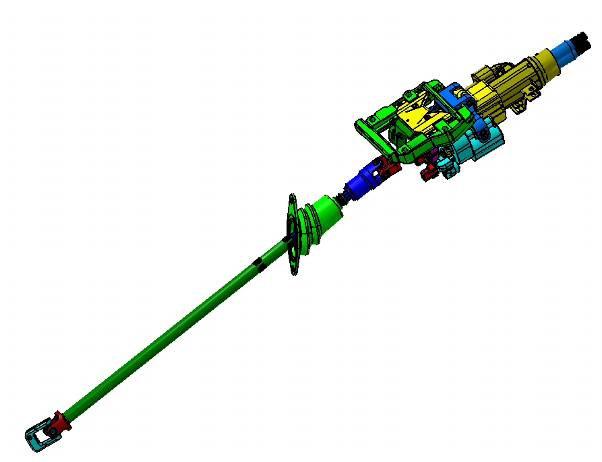
6 minute read
Maserati GranCabrio
5. Driving Controls
Driving Controls
Driving control components such as steering system and pedals are carry-over from the GranTurismo models It has the following characteristics:
• Steering diameter (from pavement to pavement): 10.7 m.
• Manual height and reach adjustment for the steering wheel as standard.
• Electric height and reach adjustment for the steering wheel with memory and easyentry function on the optional comfort pack (standard for some markets)
• Electronically controlled, speed-sensitive hydraulic servo assistance, regulated by the CSG-ECU (same tuning as GranTurismo)
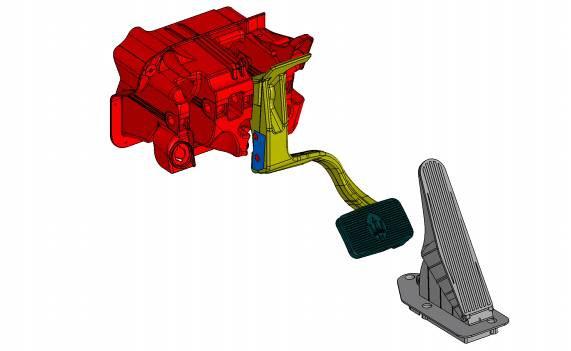
• Multi-functional steering wheel with gearshift paddles fixed on the steering column, carry-over from Quattroporte /GranTurismo models.
• A wide number of trim options available for the steering wheel: a selection of different colours and leather /wood options for the steering wheel rim
Driving control components such as steering system and pedals are carry-over from the GranTurismo models.
The steering wheel is available with a wide number of trim and colour options.
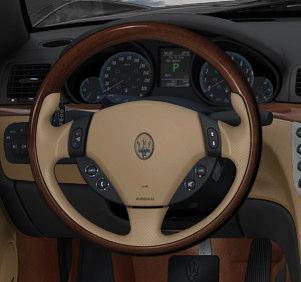
Suspension and Wheels
6. Suspension and Wheels Wheels and Tyres
The Maserati GranCabrio is equipped as standard with 20” tyres with elegant and powerful spoked rims in the form of the marque’s Trident symbol – called “Trident” wheels The rims are available not only in the standard silver colour, but also in the more aggressive Mercury grey finish On request the GranCabrio can be equipped with 20” Birdcage wheels, both in silver an Mercury grey
Note: for the USA market, the silver colour Birdcage wheels is are fitted as standard.
Standard Trident wheels
Optional wheels
Wheel dimensions front: 8 5J x 20’’ H2 rims, 245/35 R20 tyres
Wheel dimensions rear: 10 5J x 20’’ H2 rims, 285/35 R20 tyres
Note: through the Maserati parts department, also 19” wheels can be purchased for the GranCabrio.
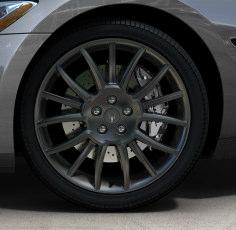
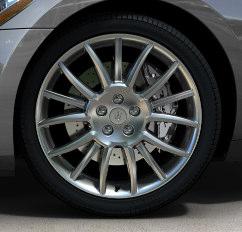
Vehicle under static load configuration: full fluid levels (incl fuel) and 75+75 kg on the front seats
Maserati GranCabrio
Suspension
Suspension and Wheels
The GranCabrio is fitted as standard with Skyhook system. The suspension lay-out of the GranCabrio is a carry-over from the Quattroporte /GranTurismo models. The springs and shock absorbers have a specific set-up for the different weight of the GranCabrio
Characteristics:
• Front: quadrilateral with forged aluminum hub carriers, specific aluminum gas dampers with continuous damping variation and acceleration sensors on each wheel (Skyhook), specific coil over helical springs.
• Rear: quadrilaterals with forged aluminum hub carriers, additional radius bar for toein control; specific aluminum gas dampers with continuous damping variation (Skyhook), specific coil over helical springs
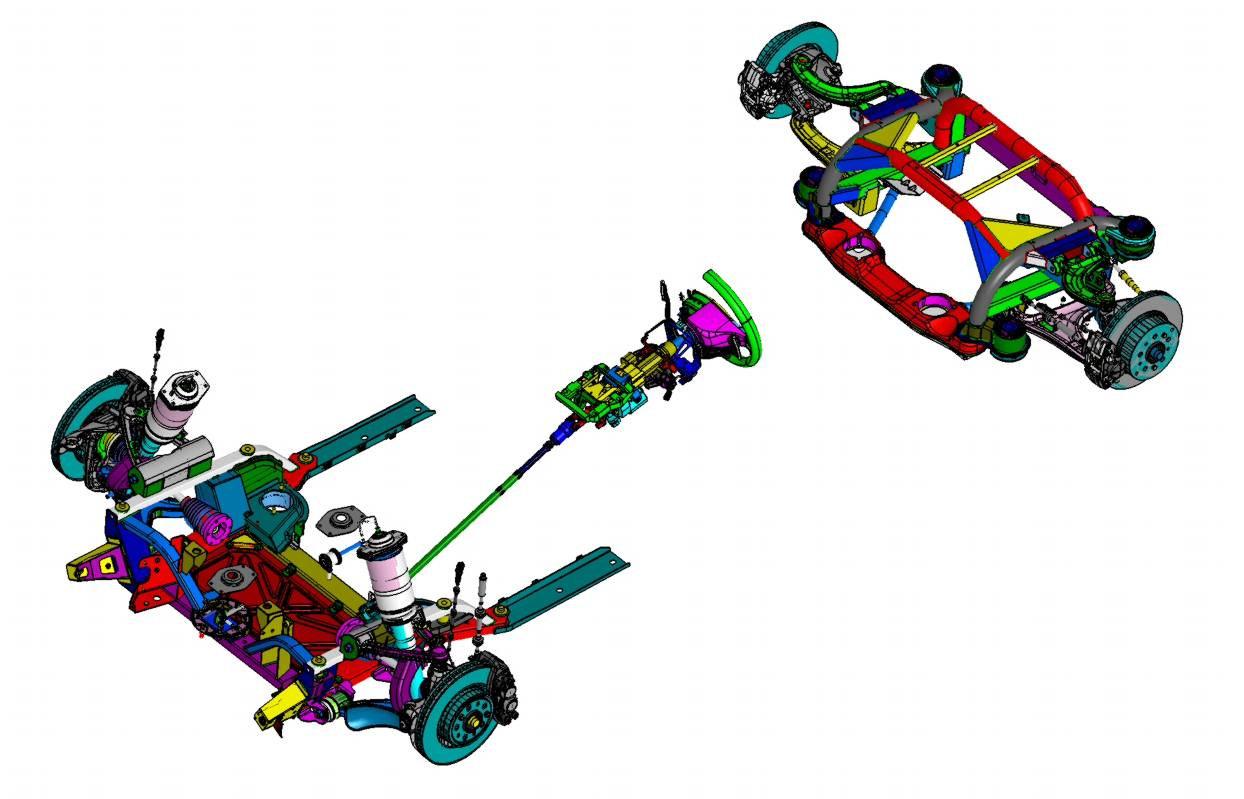
• Tubular front and rear roll bars (circa 2Kg weight saving, both front and rear), designed to reduce body roll and improve driving comfort
• Front steel subframe is a carry over from the Quattroporte Sport GT S with reinforced transverse sections.
• Rear steel subframe is a carry over from the Quattroporte Sport GT S.
• Skyhook constant variable damping control with specific tuning, both in Normal and Sport mode
Skyhook lay-out:
Suspension and Wheels
The Skyhook system of the GranCabrio has the same basic lay-out as on the GranTurismo model The following components are involved:
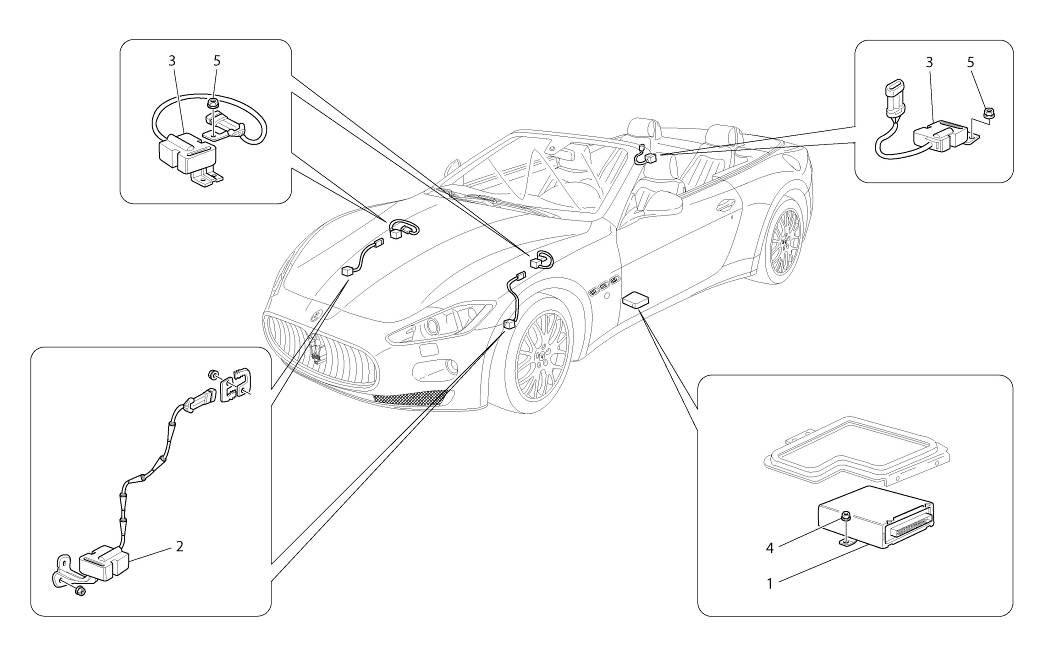
• 2 wheel acceleration sensors, fitted on the front suspension levers
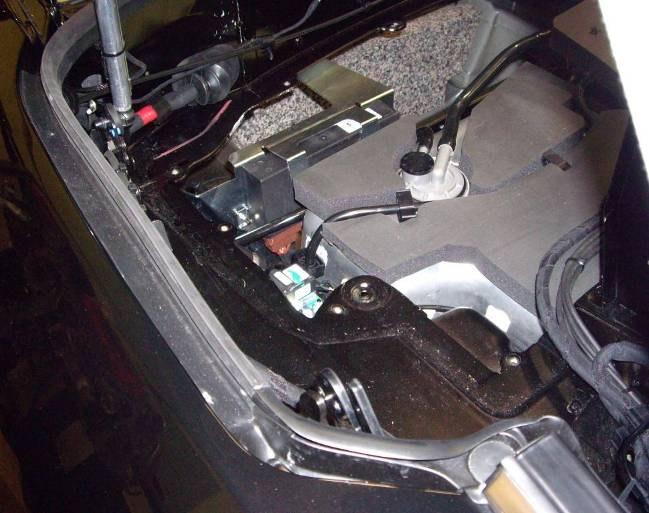
• 3 body acceleration sensors (2 front, 1 rear)
• 4 aluminium shock absorbers with integrated solenoid valves
• Central ECU (NCS)
Note: the four shock absorbers and also the software calibration of the NCS are specific for the GranCabrio model.
Safety Components
7. Safety Components
Airbag system:
1. Airbag node (NAB)
2. Passenger side frontal airbag
3. Passenger airbag deactivation switch (only for certain markets)
4. Seat belt pretensioner, passenger side
5. Side bag, passenger side
6. Lateral crash sensor, passenger side
7 Side bag, driver side
8. Lateral crash sensor, driver side
9. Seat belt pretensioner, driver side
10. Airbag system warning light
11. Warning light deactivation passenger airbag
12. Driver side frontal airbag
13. Clock spring
14. EOBD connector
15 Left frontal crash zone sensor
16. Right frontal crash zone sensor
The Maserati GranCabrio uses a new generation of dual stage airbags for the driver and front passenger These use a technology employed for the first time on the Quattroporte and then incorporated on the GranTurismo The system is “intelligent” - it adapts autonomously to the stature of the occupant and adjusts its deployment accordingly in case of collision
The passenger side airbag system with Low Risk Deployment function is the top-ofthe-range option in occupant protection and guarantees outstanding safety in all front collision scenarios.
Along with its increased passive safety aspects, this new solution provides a significant improvement in the styling of the top panel of the passenger side dashboard, making it more linear with the airbag better integrated into the overall design of the interior
The GranCabrio is equipped with a new type of lateral airbags or side bags, which are integrated in the front seats. They are newly designed and offer protection to both the occupants head and torso. The use of this new type of side bag allows the elimination of the separate head bag in the door panels as used on the GranTurismo models.
Note: side and frontal airbag activation is controlled by a separate strategy inside the NAB , they do not necessarily deploy together
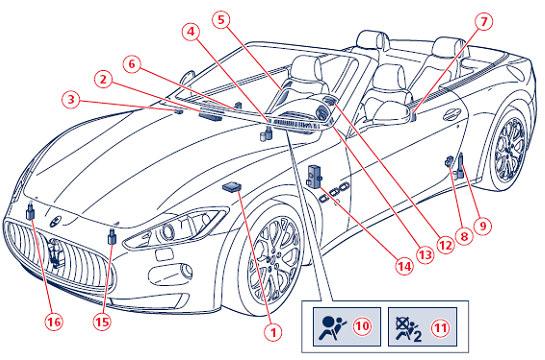
Safety Components
Roll Over Protection System (R.O.P.S.)
All GranCabrio vehicles are as standard fitted with a roll over protection system (R.O.P.S.) under the form of an active roll bar. The system is hidden behind the head rests of the rear seats and will deploy in case a roll over risk situation is identified. Together with the reinforced windscreen frame will this offer the best possible passenger protection in the event of a roll over.
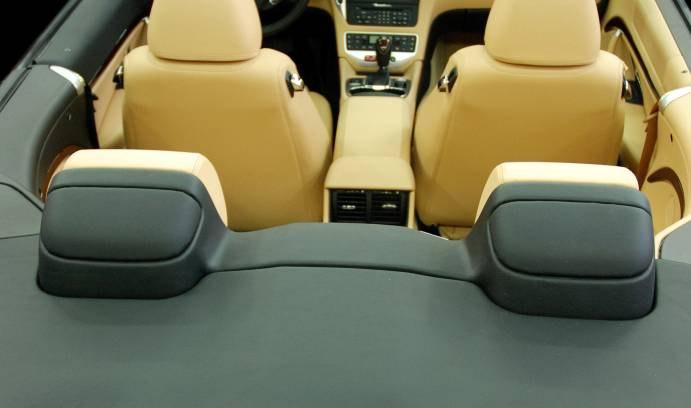
The system consists of two sliding struts in two drawer-like casings that extend in the vertical direction Both casings are fixed to the vehicle chassis, behind the rear seat back rests They are inclined 15° backwards in order to aim at the rear window (with soft top in closed position). The rear window will break when the roll bars are activated, allowing them to fully extend. This is done so to provide the greatest possible safety for even the tallest rear passengers; if deployed towards the roof, the presence of the canopy would limit the extension of the roll-bars, thus reducing the margin of safety. The roll-bars deploy when the handling of the car makes an imminent roll probable, and also when the car suffers a side or rear collision of a certain force so that to prevent damage to the system the roll-bars are extended to deal with possible future emergencies
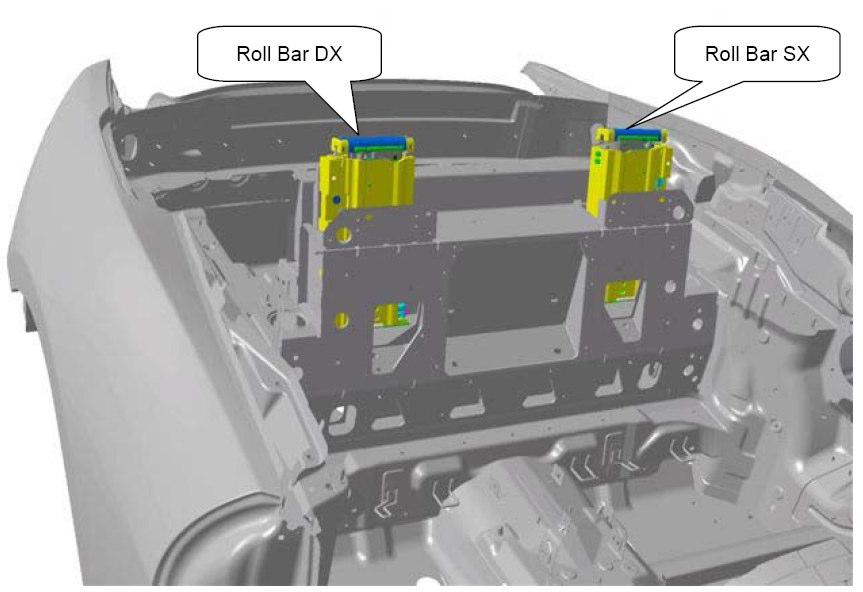
Safety Components
The active roll bars are controlled by the airbag node (NAB) and are triggered by means of a pyrotechnic release mechanism A specific control logic inside the NAB will evaluate the risk of a roll over and activate the roll bars when a certain vehicle roll angle is reached.
The total activation time + extraction time of the system is less than 190 ms, which is far less than the time it takes a vehicle to roll around its own axis.
Extendable roll bar
The extendable roll bar, when inserted in its casing, is loaded by a spring and locked by means of a locking pawl When activated, the pyrotechnic charge will release the locking pawl and the roll bar will extend by means of the spring force
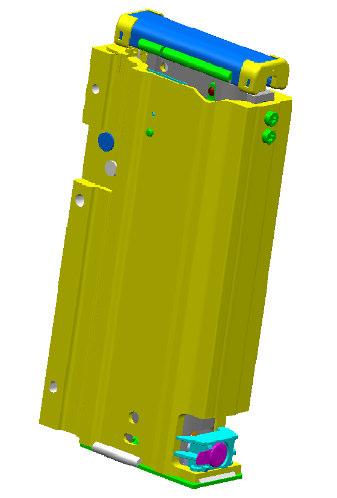
During its extension, a mechanical no-return mechanism will lock the roll bar in the extended position. This will prevent the roll bar from being inserted by an external force, for example, if the vehicle hits the ground during a roll over.
Both extendable roll bars are always activated together and need to be replaced after deployment deployment
In normal conditions, the extendable roll bar is covered by a plastic shield behind the rear head rests The shield contains an integrated pin made of tungsten The pin is not visible but is hidden beneath a pre-cut orifice in the plastic It will protrude through the plastic in case of deployment and break the rear window the moment it hits it (in case the roof is closed)
This is necessary to allow the roll bars to extend to their full length (281mm) and offer the best possible occupant protection in the event of a roll over
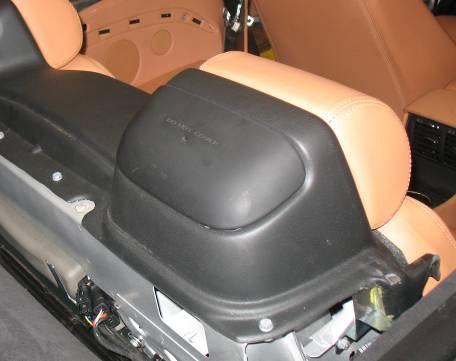
Safety Components
Warnings and instructions for dealing with active roll bars
The extendable roll bar as a service part comes with a protective cover which is fitted on top of it This cover will prevent an accidental deployment of the roll bar during storage, handling or installing, causing possible injuries
Securing binder
Caution
In case of replacement of a roll bar, only remove the protective cover after having completed the installing in the vehicle.
The electrical connectors of the right hand side and the left hand side roll bars have a specific colour:
• Right hand side roll bar: green connector
• Left hand side roll bar: blue connector
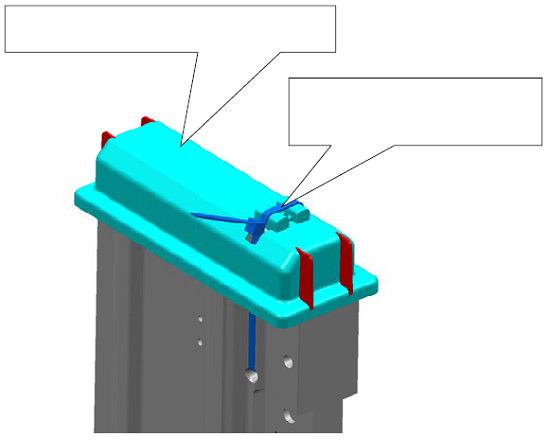
Make sure the correct position of each connector is respected!
Caution
Just as with airbag units, the vehicle’s battery must always be disconnected before removing or installing an extendable roll bar unit in the vehicle. Only reconnect the battery after the installing in the vehicle has been completed
Caution
Diagnostics
In case an extendable roll bar drops on the ground during transportation, it must be returned to the supplier for verification It must not be installed in the vehicle, even if no external signs of damage can be found
The airbag node (NAB) will check the electrical continuity of the connector and the wiring harness of the roll bars It will store a DTC in case a failure is detected
The right hand side and the left hand side active roll bar can be replaced individually in case of an error in the system.








